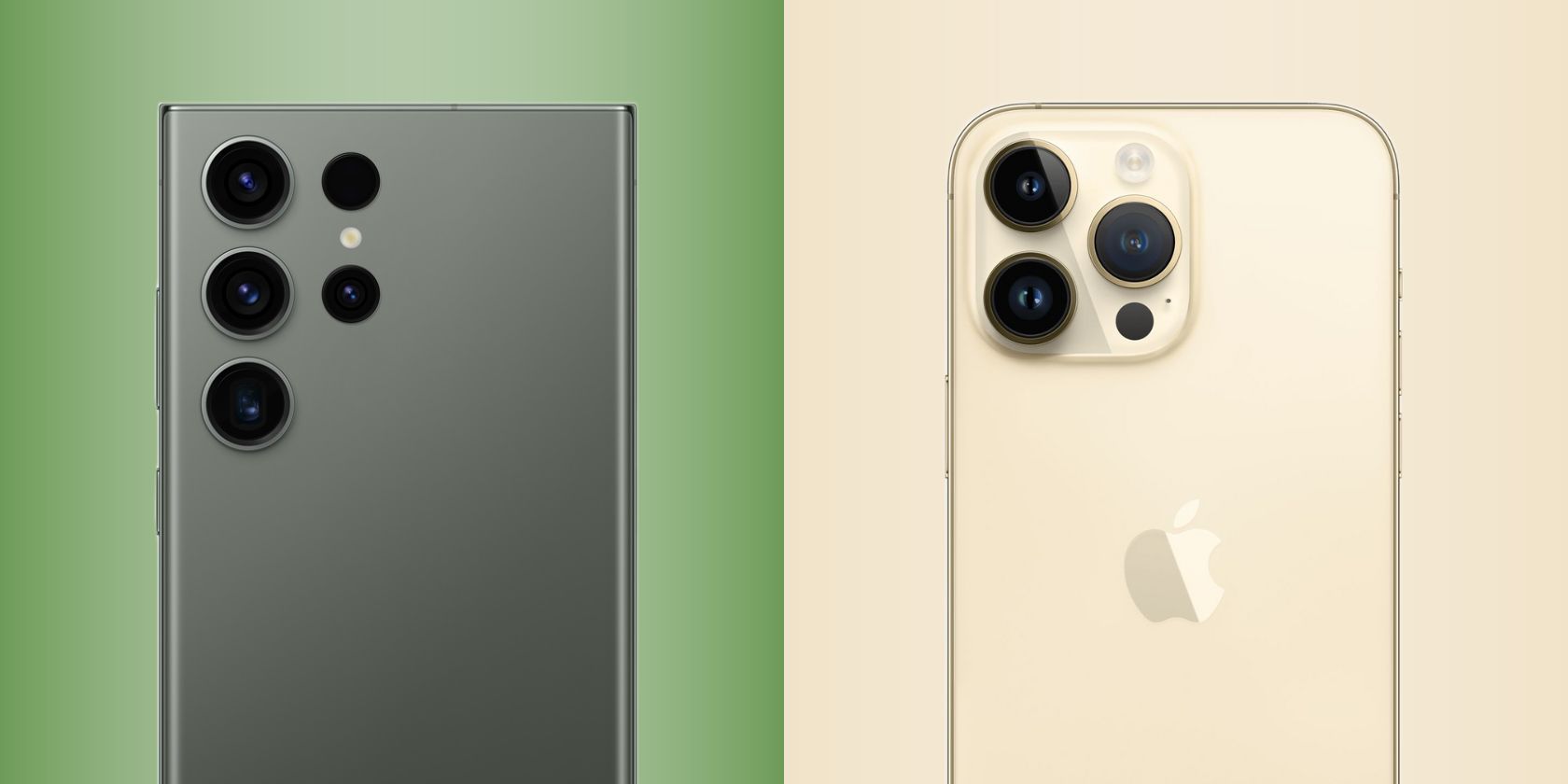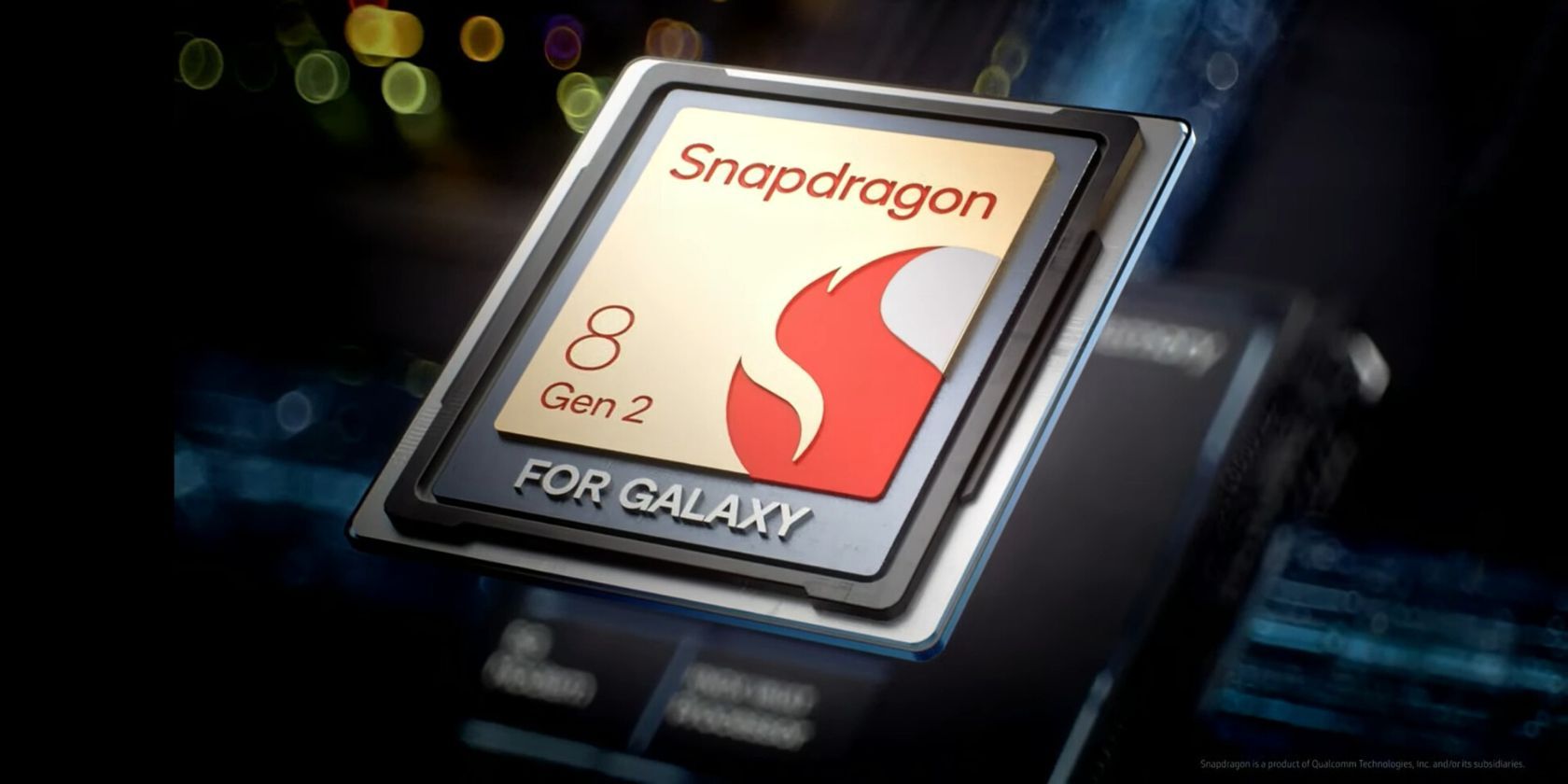Picking between two great phones is always a struggle, especially when they are as good as the Samsung Galaxy S23 Ultra and the iPhone 14 Pro Max. Both devices start at the same price as their predecessors in the US, too: $1199 and $1099 respectively.
Outside the US, both devices are more expensive than last time—presumably due to inflation and higher costs of manufacturing. Regardless, if you're looking for the best of the best, this guide will help you decide which one to buy, the Galaxy S23 Ultra or the iPhone 14 Pro Max.
Dimensions and Build Quality
- Samsung Galaxy S23 Ultra: 163.4 x 78.1 x 8.9 mm; 234 grams
- iPhone 14 Pro Max: 160.7 x 77.6 x 7.85 mm; 240 grams
The Galaxy S23 Ultra looks almost identical to its predecessor and hence remains taller, broader, thicker, and lighter than the iPhone 14 Pro Max. It uses an aluminum frame whereas the iPhone uses a stronger but heavier stainless steel frame that is more prone to scratches.
The iPhone has curved corners and flat edges, but the Galaxy has flat corners and slightly curved edges. Both phones have an IP68 rating for water and dust resistance.
The iPhones 14 series is eSIM-only for buyers in the US; Samsung thankfully still has a SIM card slot. The S23 Ultra uses the new Gorilla Glass Victus 2 on the front and back, whereas the iPhone 14 Pro Max is protected by its Ceramic Shield coating on the front glass.
Although USB-C is clearly superior, the iPhone hasn't yet given up the Lightning port.
Camera
- Samsung Galaxy S23 Ultra: 200MP f/1.7 primary, OIS, PDAF, Laser AF, 8K video at 30fps; 12MP f/2.2 ultra-wide (120-degree FoV), dual-pixel PDAF, macro photography; 10MP f/2.4 3x optical zoom sensor with OIS; 10MP f/4.9 10x optical zoom with OIS and 100x digital zoom; Front: 12MP f/2.2, PDAF, 4K video at 60fps
- iPhone 14 Pro Max: 48MP f/1.8 primary, sensor-shift OIS, dual-pixel PDAF, 4K video at 60fps; 12MP f/2.2 ultra-wide (120-degree FoV), dual-pixel PDAF, macro photography; 12MP f/2.8 telephoto, OIS, 3x digital zoom; Front: 12MP f/1.9, PDAF, 4K video at 60fps
In our comparison of the iPhone 14 Pro Max and S22 Ultra, we made three major complaints about Samsung's camera: overexposure and noise in low-light shots, poor video quality, and worse portrait shots than the iPhone. With the Galaxy S23 Ultra, the company is addressing all of these problems head-on.
You can now take 4K portrait videos and 8K videos at 30fps. The main camera has 2X wider OIS for improved stabilization. Samsung is also reducing excessive color saturation in low-light videos to make them look more natural. The microphone quality has been upgraded too, so your voice sounds fuller and cleaner.
The new 200MP camera mode is one of the best features of the Galaxy S23 Ultra for taking high-res daytime shots, but the default 12MP mode is better for most conditions. The dynamic range is improved too, and the color profile remains geared to look Instagrammable.
The iPhone 14 Pro Max has a new 48MP lens and retains all the same qualities we love about iPhone cameras: smooth videos, fast shutter speed, and consistent image quality across all the lenses. However, it does lack a lot of the interesting features found on Samsung such as 100X hybrid zoom, Director's View, Astro Hyperlapse, and more.
The iPhone is still more reliable overall and gives peace of mind. But now that Samsung is finally admitting to and solving the problems with its overly aggressive image processing algorithms, switching to Galaxy is going to be more tempting than ever before.
Processor
- Samsung Galaxy S23 Ultra: Snapdragon 8 Gen 2; 4nm fab; Adreno 740
- iPhone 14 Pro Max: A16 Bionic; 4nm process; 5-core GPU
The S23 Ultra comes with the latest Snapdragon 8 Gen 2 processor worldwide, which means there's no inferior Exynos variant this time. Samsung has also partnered with Qualcomm to develop an exclusive overclocked variant of the chip called "Snapdragon 8 Gen 2 for Galaxy" which sounds exciting but isn't substantially better than regular SD 8 Gen 2 chips.
The iPhone 14 Pro Max has the new A16 Bionic chip that still holds the record for the best CPU performance on any smartphone. However, the S23 Ultra does show slightly better GPU scores than the iPhone—indicating a superior gaming experience.
That said, most people aren't going to notice any significant difference in performance between the two phones. Why? Two reasons: one, both chips are manufactured by the same company, TSMC, and two, benchmark scores don't really matter after a certain point. Both devices are really powerful, efficient, and capable of running all modern apps and games.
Display
- Samsung Galaxy S23 Ultra: 6.8-inch Dynamic AMOLED 2x; 1440 x 3088 resolution; 501 PPI; 1750 nits peak brightness; 120Hz dynamic refresh rate with LTPO 2.0; HDR10+; Gorilla Glass Victus 2; Always-on Display
- iPhone 14 Pro Max: 6.7-inch LTPO Super Retina XDR OLED display; 2796 x 1290 resolution; 460 PPI; 2,000 nits peak brightness; 120Hz ProMotion; HDR10; Ceramic Shield glass protection
The Dynamic Island on the iPhone 14 Pro series made all the headlines during its launch. But after having spent some time with the device, it's becoming increasingly clear that although the feature is indeed useful and fun, it's not revolutionary and may even be overhyped.
Don't get us wrong, the pill-shaped Dynamic Island cutout is miles better than the notch on older iPhones. But the minimal punch-hole front camera design makes so much more sense when watching movies, playing games, scrolling social feeds, or multitasking.
The only area where the iPhone's display beats Samsung's display is brightness. The former peaks at 2000 nits whereas the latter peaks at 1750 nits—the same as its predecessor.
RAM and Storage
- Samsung Galaxy S23 Ultra: 8/12GB LPDDR5X RAM; 256GB/512GB/1TB UFS 4.0 storage
- iPhone 14 Pro Max: 6GB LPDDR5 RAM; 128GB/256GB/512GB/1TB NVMe storage
Since iPhones are better at RAM management, they need less of it than Android phones. This means the 8GB RAM on the Galaxy S23 Ultra will offer almost the same multitasking capability as the 6GB RAM on the iPhone; it's only when you move up to 12GB RAM that you notice minor differences.
What's more interesting is that the S23 Ultra comes with 256GB as base storage. This is a huge win because even though 128GB is enough for most people, big flagships usually eat through your storage quicker, so more storage is greatly appreciated. Both devices cap at 1TB.
Battery
- Samsung Galaxy S23 Ultra: 5000mAh battery; 45W fast wired charging; 15W wireless charging; 4.5W reverse wireless charging
- iPhone 14 Pro Max: 4323mAh battery; 15W MagSafe wireless charging support; 7.5W Qi wireless support
Since Apple Silicon is so power efficient, the smaller 4323mAh cell on the iPhone 14 Pro Max easily outlives Android phones with 5000mAh cells. You can save even more battery life if you turn off the Always-On Display on the iPhone or hide your wallpaper from the AOD screen.
Fortunately, the S23 Ultra has much better battery life than its predecessor despite having the same total capacity of 5000mAh—that's thanks to the more efficient TSMC-made Snapdragon 8 Gen 2 chip. In fact, we wouldn't be surprised if the battery life on the S23 Ultra matches that of the iPhone 14 Pro Max.
Samsung also has faster 45W charging and can fully charge in an hour, and the iPhone takes almost two hours using Apple's 20W brick. The former is also capable of reverse wireless charging to power your Galaxy Buds and Galaxy Watch—something the iPhone can't do.
The Galaxy S23 Ultra Is a Clever Refinement
Samsung has made a lot of good decisions with the Galaxy S23 Ultra: addressing the problems with its image processing, getting rid of Exynos, offering 256GB as the base storage, and using the latest LPDDR5X RAM and UFS 4.0 storage standard. Although the device looks very similar to its predecessor, it's almost completely redesigned from the inside.
At the same time, the iPhone 14 Pro Max continues to boast its more reliable camera system, brighter display, Dynamic Island cutout, and deep integration with the Apple ecosystem. If you already own other Apple products, the iPhone is a no-brainer, but if you're looking to switch to Galaxy, now is a better time than ever.



-(1).jpg)